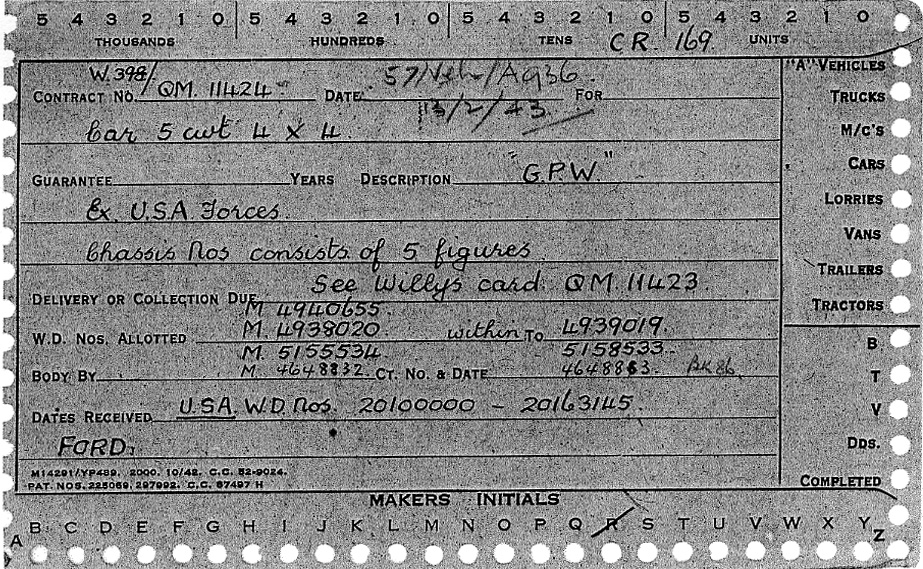|
|
Affiliated with English units in Europe from 1944 until 1945 when it was renovated in one of the many English workshops, after having been in active service.
Re-registered to M1502231, which was its most recent registration of the allied units and after the war stored in the former British RAF base, 72 Base Vehicle Depot Market Harborough, along with hundreds of other renovated Jeeps. Between 1949 to 1959 all army vehicles had their numbers changed and my Jeep got the number 57YH36 in 1949.

After the war many Jeeps and other vehicles were distributed among the Nato members and other allies during the Cold War. For some reason my Jeep remained on the base until 1959, when the RAF base was supposed to close and be converted in to a prison.
All remaining Jeeps were then sold out to the civilian market. It is unclear how it ended up in Denmark as “retired” army vehicles normally were sold after through the Danish Armys auctions. This has not been the case for my Jeep. It is conceivable entered into a "batch” of Jeeps, purchased and imported to Denmark by a private importer for use in farms, which was popular among farmers as an alternative to either the more expensive new civilian version of the Jeep or a Land Rover 90''.
In 1983 it was found on a farm in Jutland by “Midtjydsk Reservedelslager”, which had specialized in these old Jeeps as well as Land Rovers. It was abandoned in a barn and was in a sad constitution after the farm owner and his family had lost interest in the vehicle.
After being renovated by “Midtjydsk Reservedelslager” it was registered with number KX 55 470, as it continues to this day.
In its lifetime it has slowly been restored to original form and is made to belong to the British 6th Airborne that was among the English units that participated in the liberation of Denmark in May 1945.
As can be seen from the pictures, the Jeep is now painted in the typical "Micky Mouse" camouflage pattern that prevailed for many of the British vehicles during World War Two.
Note the short bumper, which was necessary for the airborne Jeeps, enabling it to get into a Dakota (C47 Skytrain) transport aircraft along with a platoon of soldiers. Note also the two rods from the bumper up to the wings. These rods were mounted in order to avoid that branches or other heavily damaging scrub should destroy the steering and breake system because of the truncated bumper. Frequently, these rods were broken off because of their effectiveness was shown to be limited.
The jeep life has gone through the following major repairs:
Main Renovated engine (in the '80s), minor renovation in 2010. Gearbox replaced and clutch renovated and replaced, new wiring installed, and new cooler mounted. It also has been given a great deal of original equipment and undergone some minor repairs and maintenance.
The Jeep has been in Normandy 3 times. In 2014 we head back to the historical beaches along with the "boys" .. Also this time under its own power.
|